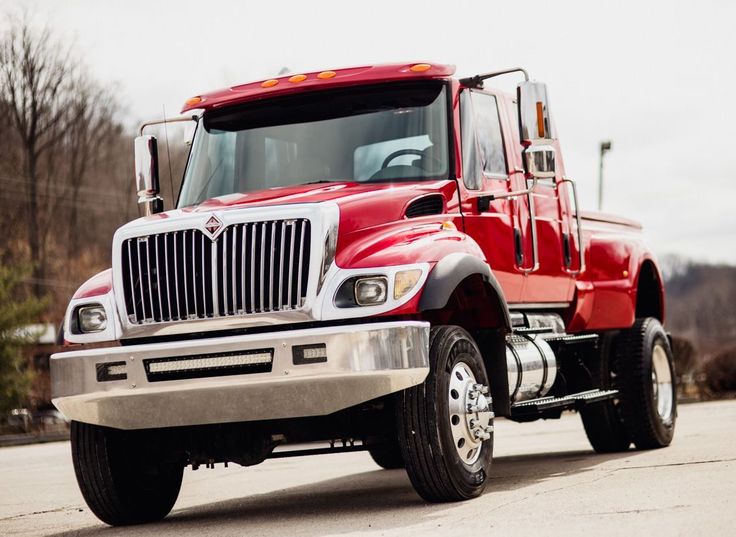The automotive market, particularly the segment for used pickup trucks, has witnessed an unprecedented surge in pricing, a phenomenon attracting massive attention from buyers, sellers, and financial institutions. This price escalation is not merely a cyclical trend; it is the result of a profound dislocation between supply and demand, influenced by global economic forces and shifts in consumer priorities. For content optimized for high-CPC (Cost Per Click) earnings, keywords related to auto loans, used car valuation, residual value, and investment are paramount. This detailed analysis explores the primary drivers behind the soaring values of pre-owned trucks, and offers strategic advice for navigating this volatile market.
I. Global Disruptions Fueling Truck Valuation
The extraordinary rise in used truck prices can be traced back to global supply chain failures and changes in the new vehicle market, creating a persistent inventory deficit.
A. The Persistent Microchip Shortage
The most significant bottleneck remains the global shortage of semiconductors or microchips, essential components for every modern vehicle’s electronic systems.
A. New Vehicle Production Halt: Without chips, automakers cannot complete new vehicles, forcing them to reduce or halt production lines. This directly shrinks the available inventory of new pickup trucks. B. Limited Inventory at Dealerships: The lack of new trucks means dealerships have fewer vehicles to sell. This scarcity dramatically reduces the number of vehicles traded in, thereby limiting the supply for the used market. C. Pricing Power Shift: With limited new options, demand naturally shifts to the used market. Dealers gain significant pricing power over used inventory because buyers lack alternatives, driving prices upward toward or even above original Manufacturer’s Suggested Retail Price (MSRP).
B. Supply Chain and Manufacturing Constraints
Beyond chips, broader manufacturing difficulties compound the supply issue, particularly for large, complex vehicles like pickup trucks.
A. Raw Material Cost Inflation: The cost of steel, aluminum, and other raw materials used in truck manufacturing has spiked globally, pushing up the final price of new trucks. This sets a higher pricing floor for comparable used models. B. Labor and Logistics Issues: Constraints on shipping, port delays, and labor shortages in manufacturing plants slow down the entire automotive supply chain, further restricting the flow of new inventory. C. Delayed Fleet Renewal: Commercial fleets and businesses that routinely replace their trucks every few years are holding onto their vehicles longer due to the high cost and long wait times for new replacements. This reduction in the typical fleet turnover cycle starves the used market of a major source of well-maintained inventory.
II. Shifting Consumer Demand and Economic Factors
The unique appeal and utility of pickup trucks, combined with macroeconomic trends, have solidified their status as a premium commodity.

A. The Utility and Versatility Premium
Pickup trucks have become the default choice for millions of North American consumers, moving beyond purely commercial or utility roles.
A. Versatility in Lifestyle: Modern trucks offer the comfort and technology of a luxury SUV combined with the utility of a hauler. They appeal to a broad demographic, from families and outdoor enthusiasts to small business owners. B. Remote Work and Home Improvement Boom: The shift to remote work and the subsequent boom in home improvement projects increased the demand for vehicles capable of towing trailers, hauling materials, and supporting DIY projects. C. Perception as a Financial Asset: Unlike many sedans or smaller vehicles, trucks, particularly popular models from Ford, Chevrolet, and Ram, have demonstrated exceptional residual value retention, making them perceived as a less risky asset purchase.
B. Financial and Credit Market Dynamics
The environment for auto financing has made the purchase of expensive used trucks more accessible, increasing competition among buyers.
A. Extended Auto Loan Terms: Lenders are commonly offering 84-month (7-year) auto loans for used vehicles. While increasing total interest paid, these extended terms lower the monthly payment, allowing more buyers to afford the higher purchase price of a used truck. B. Low Interest Rate Environment (Historically): Despite recent rate hikes, the extended period of low interest rates made borrowing capital cheaper, encouraging buyers to spend more on high-value assets like trucks. C. Increased Trade-in Equity: The soaring prices of trade-in vehicles (including older trucks and SUVs) provide buyers with a much larger down payment, enabling them to afford the inflated price of the replacement vehicle. This is a positive feedback loop sustaining high prices.
III. Strategic Advice for Navigating the Used Truck Market
For those looking to buy or sell a used pickup truck, strategic planning based on current market realities is crucial to maximize financial outcomes.
A. Buying Strategy: Minimizing Purchase Cost
Entering the market as a buyer requires patience and a focus on minimizing the total cost of ownership.
A. Be Flexible on Make and Model: Do not restrict your search to the most popular models (e.g., F-150, Silverado). Consider slightly less popular but equally capable alternatives that may have lower demand, such as specific Nissan, Toyota, or even newer electric truck models. B. Focus on Mileage Tiers: Vehicles with mileage slightly above the “sweet spot” (e.g., 80,000 to 100,000 miles instead of 50,000 to 60,000) often see a noticeable price dip while still offering many years of service. C. Secure Pre-Approved Financing: Always secure a pre-approved auto loan from a credit union or bank before visiting a dealership. This arms the buyer with a fixed rate and leverage to negotiate the final out-the-door price more effectively. D. Prioritize Long-Term Reliability: Given the current high purchase prices, invest in a pre-purchase inspection and select models historically known for long-term mechanical reliability to offset the large upfront cost with minimal future repair expenses.
B. Selling Strategy: Maximizing Profit and Value
Sellers are currently in a highly advantageous position, but timing and presentation are key to realizing maximum profit.
A. Professional Detailing and Minor Repairs: Spend money on a thorough professional detail and address minor cosmetic flaws (e.g., small dents, scratches) that can significantly impact a buyer’s perceived value and a dealer’s appraisal price. B. Highlight Maintenance Records: Provide a complete, organized record of all maintenance, oil changes, and service history. Verifiable service records instill trust and justify a premium price point. C. Explore Different Sales Channels: Do not rely solely on a trade-in offer. Obtain quotes from traditional dealerships, independent used car buyers (like CarMax), and private party sales platforms. Private sales often yield the highest price but involve more effort. D. Detail Aftermarket Upgrades: Clearly document and value any high-quality, desirable aftermarket upgrades (e.g., specialized towing packages, lift kits, bed liners). These features can command a higher price from the right buyer.
IV. The Future Outlook and Market Normalization
While prices are inflated now, market forces are expected to eventually drive normalization. However, the pre-pandemic pricing landscape may be gone permanently.

A. Anticipated Supply Recovery
As semiconductor supplies stabilize and manufacturing capacity catches up, the new vehicle market will begin to recover, slowly easing pressure on used prices.
A. Increased New Inventory: As chip production ramps up, new vehicle inventory will increase, offering buyers alternatives to the expensive used market and cooling demand. B. Fleet Renewal Resumes: When new vehicles become readily available and cost-effective, commercial and government fleets will accelerate their replacement cycles, flooding the used market with late-model, low-mileage trucks. C. Interest Rate Impact: As interest rates remain elevated, the cost of financing an expensive used vehicle rises, making the total price less attractive and naturally reducing the pool of willing buyers.
B. A Permanent Shift in Residual Value
Even with normalization, experts predict that pickup trucks will retain a higher baseline value compared to historical norms.
A. New Equilibrium Price: The fundamental shift in consumer demand and the complexity of modern trucks suggest the equilibrium price for both new and used trucks will settle at a higher level than pre-2020 prices. B. Value of Digital and Safety Features: The embedded technology in modern trucks (ADAS systems, infotainment) adds intrinsic value that supports higher residual pricing. C. Ongoing Inflationary Pressure: General economic inflation means that the cost of manufacturing will likely not return to previous levels, ensuring that replacement costs (and thus residual values) remain high.
In conclusion, the market for used pickup trucks reflects a complex convergence of global supply shortages, evolving consumer demand for utility and asset value, and favorable financial conditions. For both buyers and sellers, success in this high-stakes environment depends entirely on understanding these underlying economic drivers and employing targeted, well-researched strategies to optimize their financial transactions.





